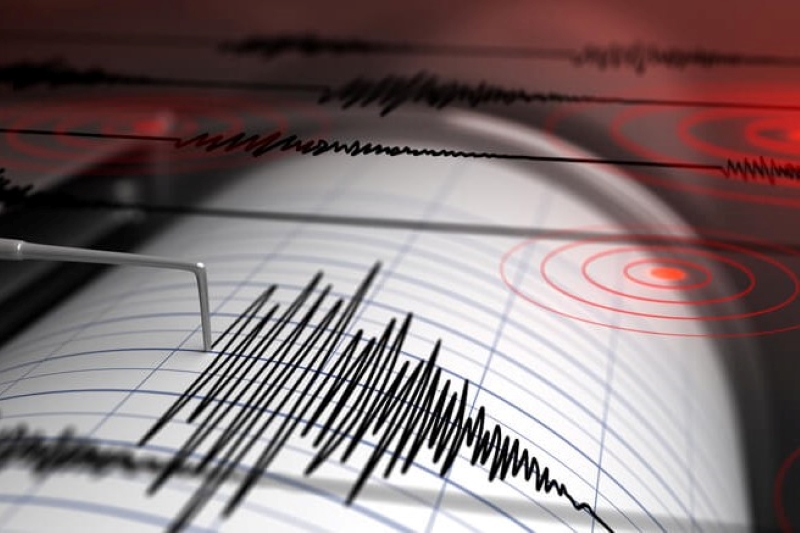
Earthquakes: the difference between the Richter scale and the Mercalli scale
We often hear about the Mercalli Scale or the Richter Scale in the event of strong earthquakes even if in recent years the latter is preferred
Both measure the power of an earthquake but with important differences.
Mercalli scale
The Mercalli scale, named after the Italian seismologist of the same name, classifies the intensity of an earthquake according to its visible effects on buildings.
To clearly see damage to buildings we must be facing a 7th degree shock while the maximum degree, the 12th, provides for the total destruction of every human artifact:
1st degree: imperceptible shock (only instruments can feel it);
2nd degree: very light shock (few feel the shock);
3rd degree: light shock (slight vibrations are felt);
4th degree: moderate shock (many feel it and the objects above swing);
5th degree: rather strong shock (felt by people and falling objects);
6th degree: strong shock (a few cracks and everyone feels the earthquake);
7th degree: very strong shock (even people who are asleep can feel it and some buildings can be damaged);
8th degree: devastating shock (partial destruction of towns and buildings);
9th degree: destructive shock (destruction of buildings and houses in large numbers);
10th degree: completely destructive shock (total ruin of towns and large buildings);
11th degree: catastrophic shock (destruction of urban agglomerations; many victims; crevasses and landslides in the ground; tidal wave);
12th degree: apocalyptic shock (destruction of every artifact; few survivors; upheaval of the soil; destructive tidal wave).
MANAGEMENT OF MAXIMUM CIVIL PROTECTION EMERGENCIES: VISIT THE SERAMAN BOOTH AT THE EMERGENCY EXPO
Richter scale
The measurement by the American seismologist Richter intends instead to provide a more objective assessment and allows us to know the amount of energy released by the shock and its destructiveness.
It is obtained by measuring the amplitude of the ground oscillations recorded by seismographs.
Its starting point, degree zero, is the earthquake which produces a seismogram with a maximum amplitude equal to one thousandth of a millimetre, recorded by a seismograph located 100 kilometers away from the epicentre.
The energy released grows as the magnitude increases: one more unit in the scale means an energy thirty times greater and corresponds to an oscillation amplitude ten times greater.
If an earthquake occurs in the middle of a desert and its Richter magnitude is 7.0 but there is no damage because the area is desert, on the Mercalli scale this earthquake will be classified as 0.
If a magnitude of 7.0 Richter occurs in a large city and knocks down all the buildings, the Mercalli degree will be 12.
VISIT ADVANTEC’S BOOTH AT EMERGENCY EXPO AND DISCOVER THE WORLD OF RADIO TRANSMISSIONS
The intensity of an earthquake, in the Richter Scale is measured in magnitude, and each level of magnitude tends to cause specific damage in cities:
magnitude 0-1.9: can only be recorded with suitable equipment;
magnitude 2-2.9: only those who are lying down feel the shock and the pendulums swing;
magnitude 3-3.9: quite strong vibrations;
magnitude 4-4.9: it is felt by many; a pendulum moves noticeably; glasses and plates clink; minor damage;
magnitude 5-5.9: everyone feels it, the walls crack and the most unsafe buildings collapse;
magnitude 6-6.9: collapse of houses; tsunami risk; population in danger;
magnitude 7-7.9: panic; danger of death in buildings, most of which collapse;
magnitude 8-8.9: danger of death everywhere; uninhabitable buildings. In the sea, the waves are up to 40 meters high;
magnitude 9-9.9: total flooding of the territories in question or displacement of land and numerous deaths. Strongly affected population;
magnitude 10 or more: apocalypse; cracks in the Earth, total destruction of artificial structures and formation of tidal waves (this category is only theoretical: there are no faults long enough to cause such an energetic earthquake).
DO YOU WANT TO KNOW RADIOEMS? VISIT THE RADIO BOOTH DEDICATED TO RESCUE IN EMERGENCY EXPO
Is it better to use the Richter scale or the Mercalli scale?
There is no clear-cut answer to this question.
For the reasons explained, it is preferable to rely on the Ricther measurement when you want to have an objective measurement of the power of an earthquake, and instead rely on the Mercalli evaluation when you want to have an idea of the damage to objects and people caused by the earthquake.
Using both scales together is probably the best choice to describe a seismic event.
Read Also
Emergency Live Even More…Live: Download The New Free App Of Your Newspaper For IOS And Android
Difference Between Earthquake, Aftershock, Foreshock And Mainshock
Major Emergencies And Panic Management: What To Do And What NOT To Do During And After An Earthquake
Difference Between Wave And Shaking Earthquake. Which Does More Damage?
Earthquake And Loss Of Control: Psychologist Explains The Psychological Risks Of An Earthquake
Civil Protection Mobile Column In Italy: What It Is And When It Is Activated
Earthquakes And Ruins: How Does An USAR Rescuer Operates? – Brief Interview To Nicola Bortoli
Earthquakes And Natural Disasters: What Do We Mean When We Talk About The ‘Triangle Of Life’?
Earthquake Bag, The Essential Emergency Kit In Case Of Disasters: VIDEO
Disaster Emergency Kit: how to realize it
Earthquake Bag : What To Include In Your Grab & Go Emergency Kit
How Unprepared Are You For An Earthquake?
Emergency Backpacks: How To Provide A Proper Maintenance? Video And Tips
Earthquake and How Jordanian hotels manage safety and security
PTSD: First responders find themselves into Daniel artworks
Emergency preparedness for our pets


